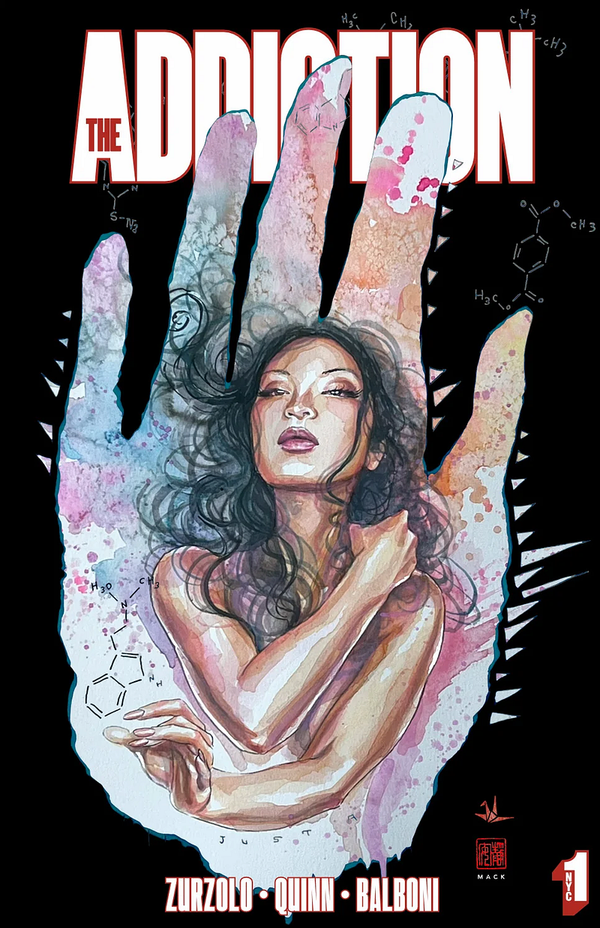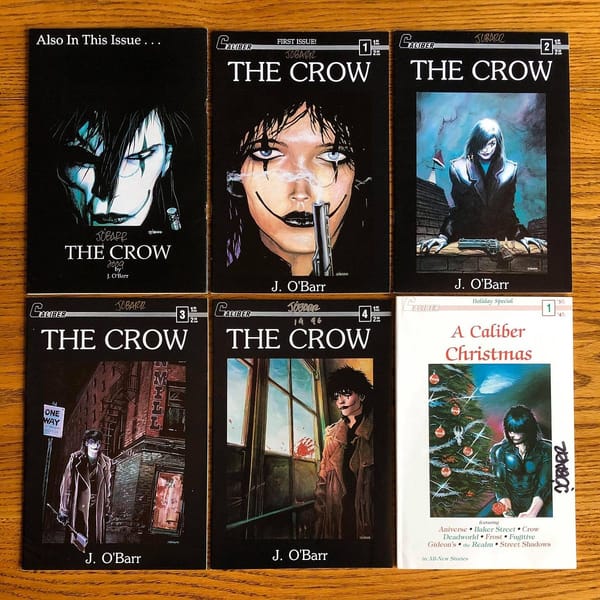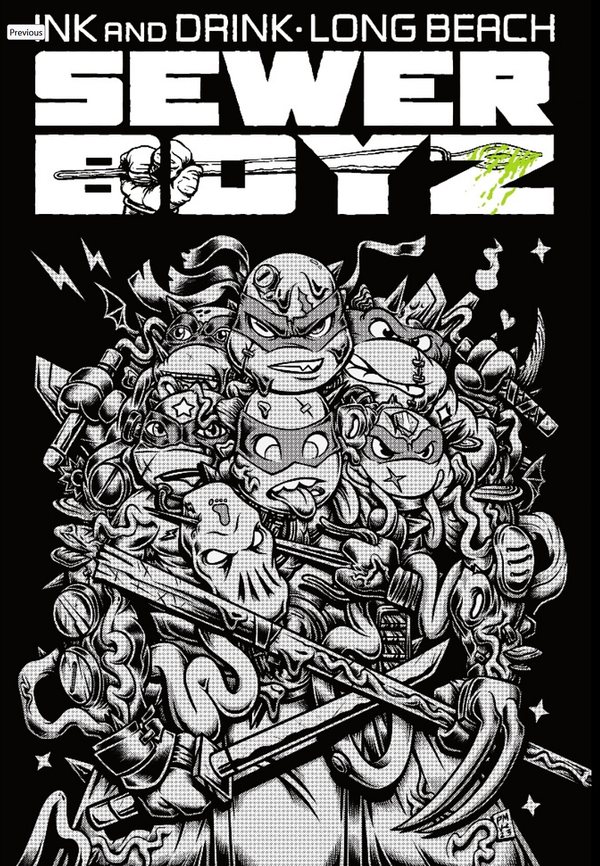The Amateur Creator’s Union: My Internet Before the Internet, Part 2
While I was yacking with my new-found friends, the Amateur Creator’s Union was building its own little publishing empire. It started with…
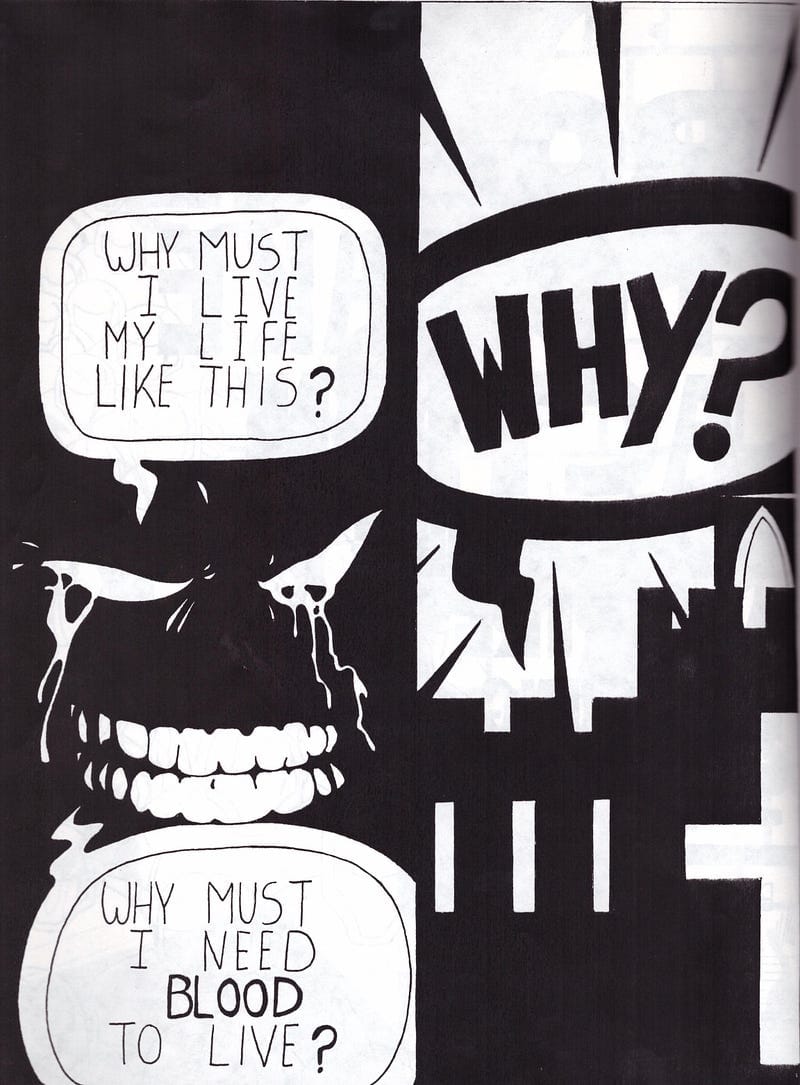
The Amateur Creator’s Union Part 2: Empire Building
While I was yacking with my new-found friends, the Amateur Creator’s Union was building its own little publishing empire. It started with a series of photocopied “ashcan” comics. Here the ACU played the role of print-on-demand/order fulfiller, not unlike Lulu or Amazon Kindle Direct. You could send in camera-ready pages and founder Shane Harper would list them for sale in the Portfolio newsletter. When an order for one came in, he’d photocopy it and send it out.
The first batch included The Id # 1 by Craig T. Lewis, Spider by Rhian Engel, Pack by Jay Prince, and Shane’s own Welcome to the World of Augustus, which he wrote and illustrated.



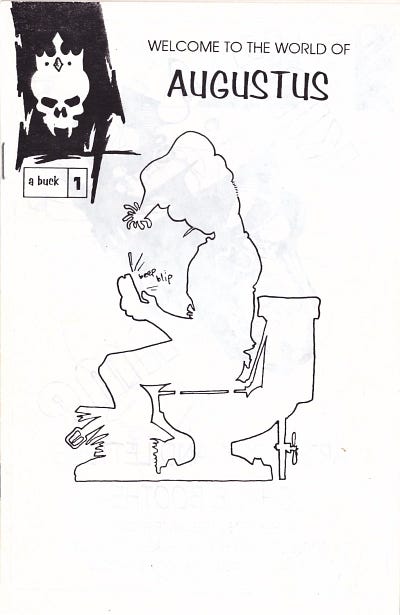


Shane did two issues of Augustus. In the first, Augustus smoked a joint in the mall bathroom and apparently drops it in the toilet. Then he throws away his expensive new shoes because he stepped on something. Poop or gum, I’m not sure which. In the second, Augustus apparently shoots a cow, thinking it’s a milk carton. Or maybe it’s the other way around? This is some of the first alternative work I saw outside the pages of the “Palmer’s Picks” column in Wizard. I had read James O’Barr’s “Frame 137,” so it wasn’t my first time seeing a protagonist use illicit drugs in a comic, but I do remember this being vaguely scandalous at the time. But there is sort of an anti-drug angle to it. Augustus says being high is no fun because he feels stupid. I mean, it doesn’t exactly make you want to do whatever he’s doing, which sure sounds like it’s a lot stronger than pot if it can him forget he’s holding a gun and think a cow is a milk carton. The art is simple but impressive given how young Shane was at the time. He tells me that he wishes he’d drawn more backgrounds, but, hey, if leaving the backgrounds out worked for Frank Miller, I see no reason Shane should feel bad about skimping on them when he was a teenager.
The ACU ended up printing a ton of different ashcans, way more than I ended up buying — I think around three dozen.
My favorite of these was Spider, which was an angsty, violent comic about a vampire that looks like it took some notes from both Spawn and Tim Tyler’s Blood Reign. I just couldn’t get enough dark, gothic stuff back then. Engel went on to do an online comic strip in the early 2000s that you can find on his Deviant Art page, and now owns a tattoo studio.
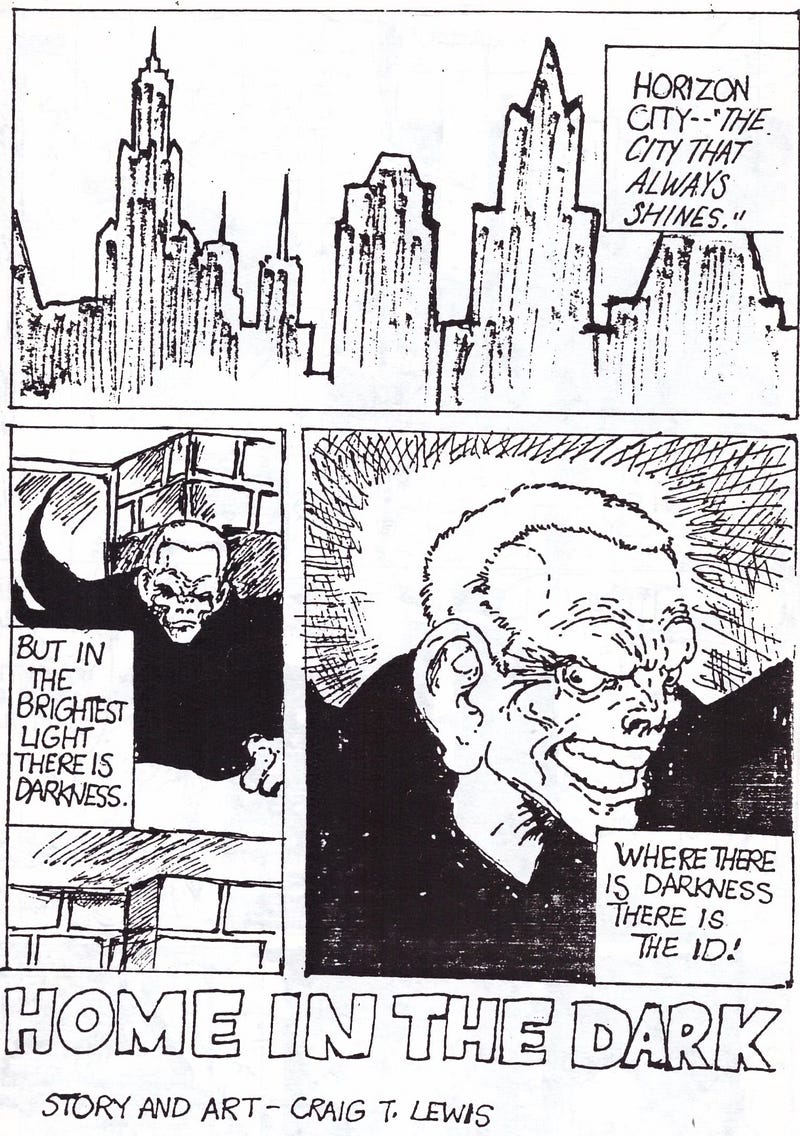
The Id # 1 by Craig T. Lewis, a comic about an incubus who fought crime, was one of the first batch of ashcans. Lewis also released a single ashcan issue of a superhero team book called The Dynamics. I don’t know if he went on to do anything else in comics or art.
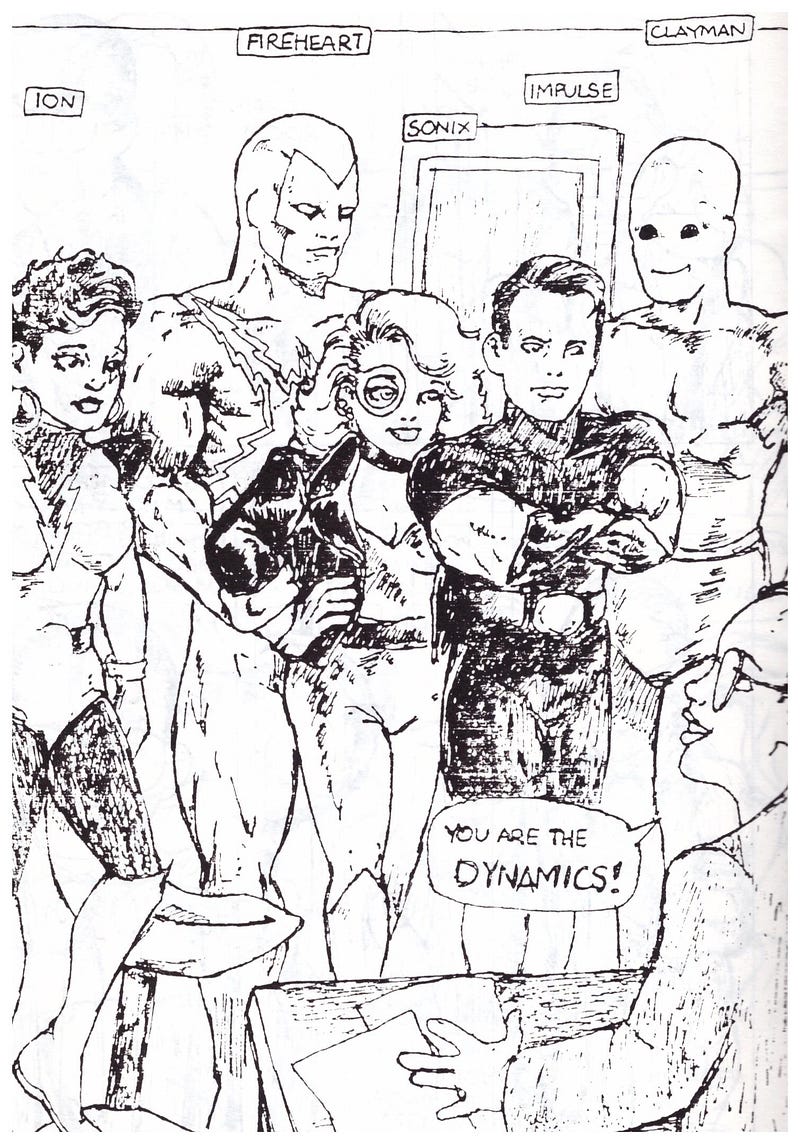

The supercop book Motown Heat is important to me because I corresponded a lot with artist Bobby Hewitt Jr, who drew a pinup for me of a Green Lantern type character I called Starblazer. Bobby went on to draw some stuff for a small publisher called Dilemma Productions. I don’t know if he did anything after that. Writer Don Martinez’s site for the book was the only surviving mention of the ACU on the web before I started cataloging my stuff. He went on to publish several novels.
To help people sift through the ashcans, member Rob Kraneveldt wrote a regular review column in Portfolio.
“We sold maybe 50 ashcans a month,” Shane says. “None of them really flew off the shelves by any means. A lot of our members never really tried to send any correspondence or buy any ashcans, I think they just sat back and read the newsletter.”
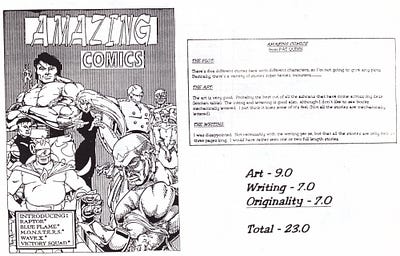

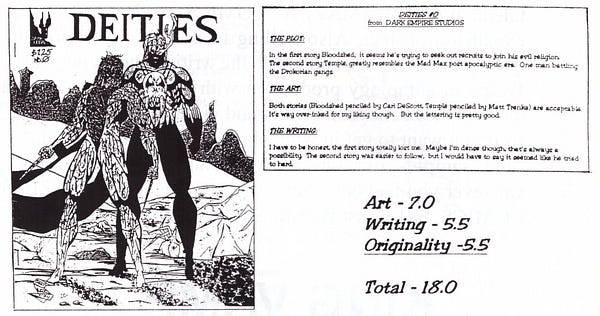

The ACU published more than just ashcans. In 1994, its publishing wing, Freelance Studios, published Sketchbook, an anthology featuring some of the strongest work by ACU members.
It contained:
- “The Risen” by Michael Ryan. A masked vigilante stops a rape in Central Park. The twist: he doesn’t remember who he is.
- “The Wrecking Crew” by Phillipe Xaviar (as Philip Xaviar). On May 8th, 2026, a group of superhumans jump out of a plane onto what appears to be a remote island and duke it out with a bunch of heavily armored soliders.
- “The Back Rider” by Tom Mullin. A medieval fantasy story about a guy who was about to achieve the highest possible rank in a group of elite soldiers, but goes on the run after deciding he disagreed with what he was being taught.
- “Assassin X” by Samal McNealy (as Samaol Matthews). In a flashback, a man escapes the headquarters of “The Brotherhood of Ininity” headquarters. In the present, a superhuman infiltrates that same headquarters at the direction of the guy who escaped.
- “M.O.N.S.T.E.R.S.” by Pat Quinn, with inks by Carlos Taylor and letters by Drew “Condor” Kistler. We learn that a group of monstrous superhumans known as the Mobile Occult Neutralization Strike Team for the Eradication of Radical Supernaturals live beneath a dilapidated masion.
It also has pin-ups by Chris Wick, John Stacey, Dustin Pruitt, and Edward Bourelle, and a back cover by Chris Blalock.


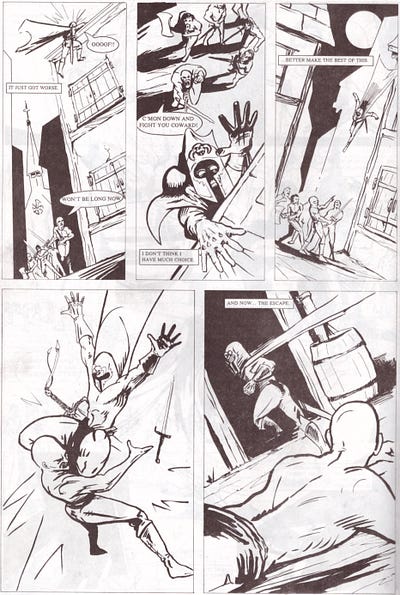


Today Sketchbook doesn’t look like much. But its creators went on to bigger and better things. Michael Ryan and Pat Quinn have probably been the most visible of the bunch. Ryan did some work for Wildstorm before signing an exclusive deal with Marvel, where he worked on several high-profile titles including stints on Cable and Iron Man. Later he worked for Michael Turner’s Aspen Press. Quinn did some work for Marvel, DC, and various independents but is probably best known for his work on GI Joe at Devil’s Due. He’s now a sequential art instructor at the Savannah College of Art and Design.
Mullin is now a colorist and color reconstruction artist for companies like DC, IDW, and Marvel and recently published a short prose story in the literary End of 83.
Xaviar has had a long career primarily in independent comics. After Sketchbook, he went on to work on Legendlore at Caliber and then a few projects, including Mortal Souls with Steven Grant, at Avatar Press. In more recent years he’s mostly worked on European comics where he’s developed a more mature style. I think Tango is his primary series currently.
Samal has been less prolific but has continued doing independent comics. He did a comic called Elfman: How to Create an Icon. Now he’s working on a project called Monsters for Hire. He also puts his artistic talents to use through his cake decorating business.
The second issue of Sketchbook was advertised in Portfolio # 6, but never published. Portfolio # 7 announced that Sketchbook # 2 would be the final issue and a new anthology series called Domains would replace Sketchbook, but no issues of Domains ever saw print.
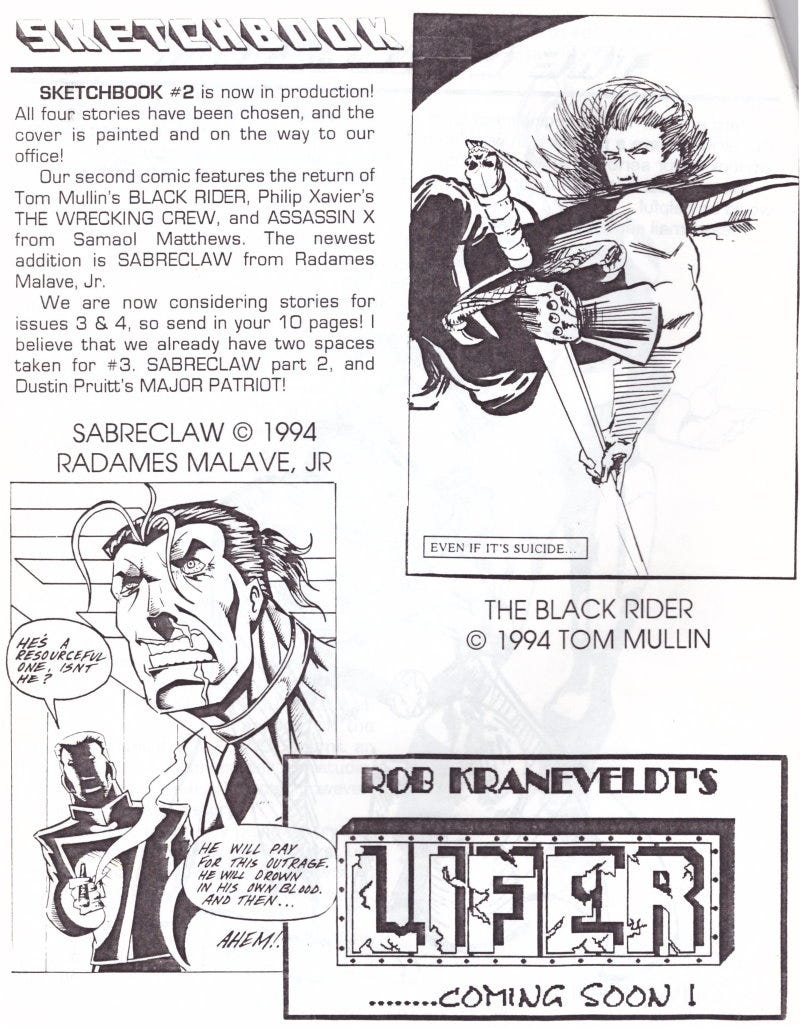
Before joining the ACU, comics publishing was a mystery to me. I knew a little about the self-publishing revolution, thanks to the success of Teenage Mutant Ninja Turtles and Image Comics, and I pored over every issue of Wizard, learning everything I could. But I still had no idea how to professionally produce a comic and get it into stores.
My initial ambition was to publish something in Sketchbook. I even took out an ad in Portfolio # 9 announcing a story, for which I didn’t yet have an artist, called “Time Gang” and offering to sell signed and numbered copies of the script. I don’t actually remember doing this, but wow, a complete no-name trying to sell copies of a script for a comic that no one has ever seen was audacious. I guess you can’t blame me for experimenting. I’m certain I didn’t sell any copies of the script because I’m sure I would remember if the experiment had panned out.

I don’t remember anything about the story or whether I’d even written the script before taking out the ad, but I actually like the pitch I wrote. Maybe I should return to this idea. This was when Gen 13 and Generation X were big, so it must’ve been my stab at doing a teenage supers book. Harbinger and the Robin 2 mini-series would have been my big influences. And no, I wasn’t even in high school yet. I was barely even a teenager.
It didn’t take long, however, for me to start thinking bigger than Sketchbook. More text time…
Have any stories of the ACU that you’d like to share? Email me at klintfinley@gmail.com
